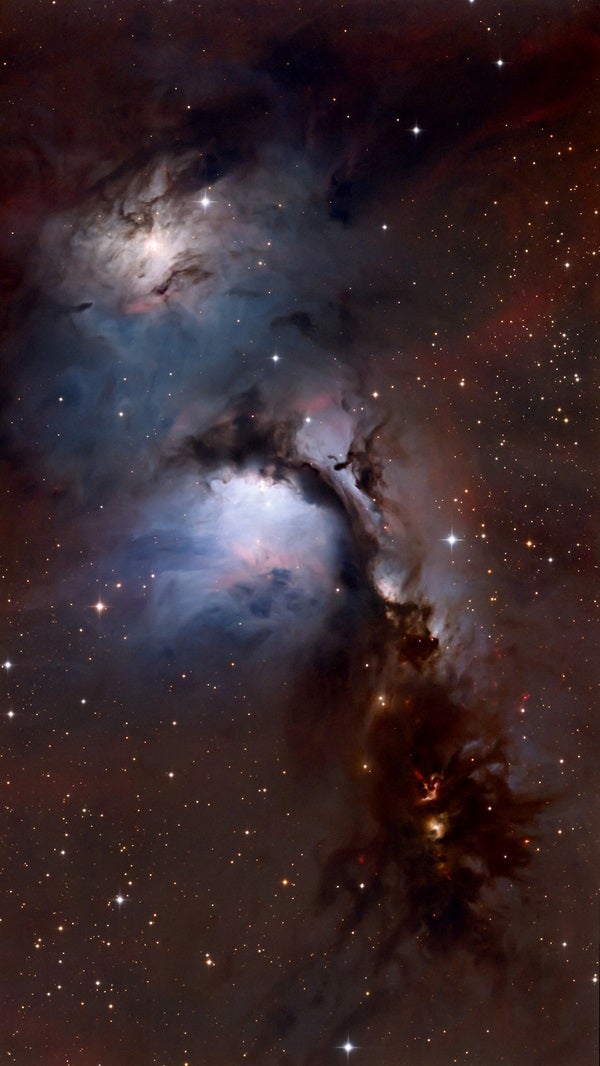Wonderfully mysterious, M78 is the brightest swath of nebulosity in a group of specterlike glows some 2½° northeast of Alnitak (Zeta [ζ] Orionis), the eastern star in Orion’s Belt. Pierre Méchain discovered M78 in early 1780 and wrote to Charles Messier that the nebula surrounded two “fairly bright nuclei.” These nuclei are two 10th-magnitude stars (HD 38563A and HD 38563B), and the chief illuminators of the surrounding nebulae. While the ultraviolet radiation streaming from these stars is not hot enough to cause the nearby gas to glow, their light does scatter off dust particles, making them shine by reflected light.
Messier resolved M78 into a “[c]luster of stars, with a lot of nebulosity,” while William Parsons, Earl of Rosse, added it to his list of spiral nebulae. However, in wasn’t until 1919 that Vesto Slipher at Lowell Observatory took its spectrum and found its true nature was a reflection nebula. Lord Rosse was likely seeing arcing filaments of dust that curl around the central stars, giving it a pseudo-spiral form.
These dark bands also divide the shining clouds into sections, which we see as the nebulosities NGC 2064, NGC 2067, NGC 2071, and McNeil’s Nebula (which flares into view only when its illuminating variable star V1647 Orionis experiences an outburst). All are associated with the Orion Molecular Cloud Complex some 1,350 light-years distant, which includes the Orion Nebula.
M78 shines at 8th magnitude and measures 8′ by 6′ — about as large as M77 in Cetus and a magnitude brighter! Under a dark sky, it is visible through binoculars. Small telescopes will show its two 10th-magnitude stars burning through the nebulosity like bloodless eyes peering through a frosty window. Larger telescopes at moderate to high magnifications will shatter the nebulosity into bright fans, wisps, and streamers tickled by dark skeletal fingers of dust. Unseen to our eyes are the clusters with hundreds of newborn stars embedded deep within the nebula’s dusty folds, as well as a family of 45 infant T Tauri stars less than 10 million years young, whose cool cores have yet to ignite.
Make sure to explore Astronomy’s full list of 101 cosmic objects you must see. New entries will be added each week throughout 2022.
To get the latest astronomical news and observing content delivered directly to your door, subscribe to Astronomy magazine today!










